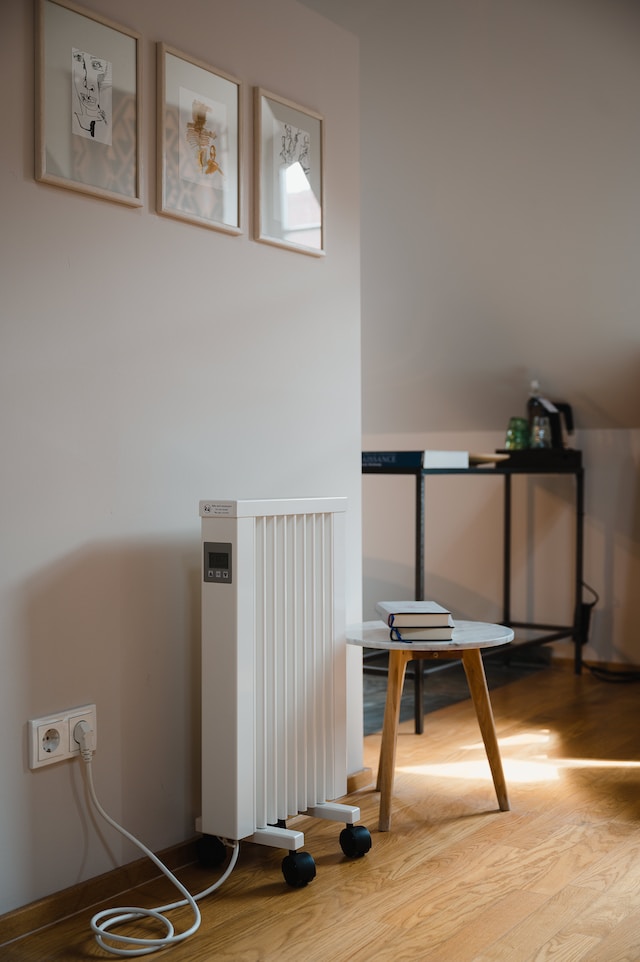There is an assortment of electric radiators on the market in Glasgow today. When selecting one for your home, consider your heating requirements and desired wattage to find one suitable to meet them.
Electric radiators offer an economical alternative to wet systems and can help save you money!
Moreover, they can be controlled using an app or even voice recognition.

Convector
Convector heaters differ from radiators by providing air heating via convection instead of radiation. Their central tube is surrounded by aluminium fins which increase surface area and thus the speed of heat transference; hot air rises, pulling cool air in from below while mixing, creating an atmospheric sensation of warmth that feels familiar for most people.
Electric convector heaters use coil elements to generate warmth. However, some companies such as ADAX and Tesy have begun shifting away from coil elements towards resin-treated aluminium elements that don’t produce dry air or discolourations of walls as traditional convector heaters do.
Convector radiators use an element to heat a thermal oil-filled fluid inside, which then transfers its energy directly into the room. As a result, they tend not to lose heat as quickly because their liquid keeps warm for longer before cooling off again.
Size, the number of inhabitants in your household and whether or not you require a radiator with an integrated thermostat or remote control all play an integral part in selecting an ideal heater for you. A BTU calculator can help determine how many watts will be necessary for your room. At the same time, our team can also advise if purchasing multiple radiators at once or living in an environment such as high-ceilinged rooms, conservatories or multi-storey buildings, as we will recommend the ideal options available to them.
Oil-filled
Oil-filled electric radiators are convection heaters that use diathermic oil to heat a room. The thermal fluid transfers heat through air convection and thermal radiation into metal walls and the surrounding air, slowly warming the space over time. Although oil-filled electric radiators may take longer to warm up than their dry thermal counterparts, their heat remains for extended periods after power has been switched off.
If you’re searching for cost-effective heating options, electric heaters with variable on/off controls could keep your home warm and toasty this winter. They’re perfect for small spaces and plug into any available electrical outlet, making installation more straightforward in places without central heating available.
But since electric heaters require high electricity usage, you must regularly check your bills. An innovative solution would be using a connected thermostat like Muller Intuitiv with Netatmo; it enables users to monitor energy usage and heating levels room by room. This way, they only use as much electricity as necessary to make their homes comfortable and cosy.
Electric radiators may not emit red glow-worm-style illumination as some space heaters, but they still get very hot and can cause burns if touched directly. To protect yourself and avoid injuries caused by electric radiators, ensure they remain several feet from combustible materials like draperies and furniture, as well as children or pets that may come near.
Radiator with a thermostat
Electric radiators feature thermostats to enable you to maintain room temperature quickly. Easy to install and compatible with central heating systems, electric radiators are more energy-efficient than their wet (hydronic) counterparts as they use renewable resources.
Selecting an electric radiator of the appropriate size is of utmost importance as it will determine how quickly your room heats up and how much power will be consumed. Various online calculators can assist in estimating wattage requirements for any given space; however, we advise consulting a professional before purchasing any new radiator, as they will offer valuable advice.
As with insulation, home insulation plays a huge role in how much heat a radiator needs to produce; the more insulated your home is, the lower wattage you will require from your electric radiator. In addition, lot 20 compliant electric radiators tend to be more energy efficient as you can program them to only heat at certain times of the day for reduced consumption; plus, these instantaneous heaters offer instant warmth!
Radiator with a remote control
Many homeowners worry that electric radiators won’t provide sufficient heating. Yet, they can be an ideal solution for properties without access to mains gas or those who desire greater control of their heating system. Plus, installation is much simpler compared to natural gas central heating – mount directly onto the wall using simple tools and get them up and running immediately – depending on which model you select, hard-wire them directly or plug them into outlets directly with an electrician (depending on your chosen model).
Several methods are available for controlling these radiators, from remote controls and intelligent heating apps to voice assistants like Amazon Alexa or Google Home that enable voice control of heating.
When selecting an electric radiator for each room in your home, consider its requirements. For example, frequently used spaces require high thermal comfort levels, while transit rooms or rarely occupied areas may benefit from lower power outputs. For maximum control and savings on energy costs, select a digital weekly programming option which enables you to tailor heating needs precisely and save money with weekly scheduling capabilities.

